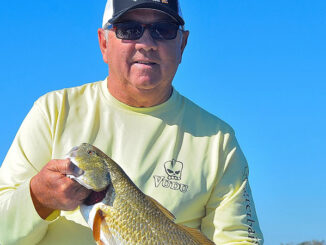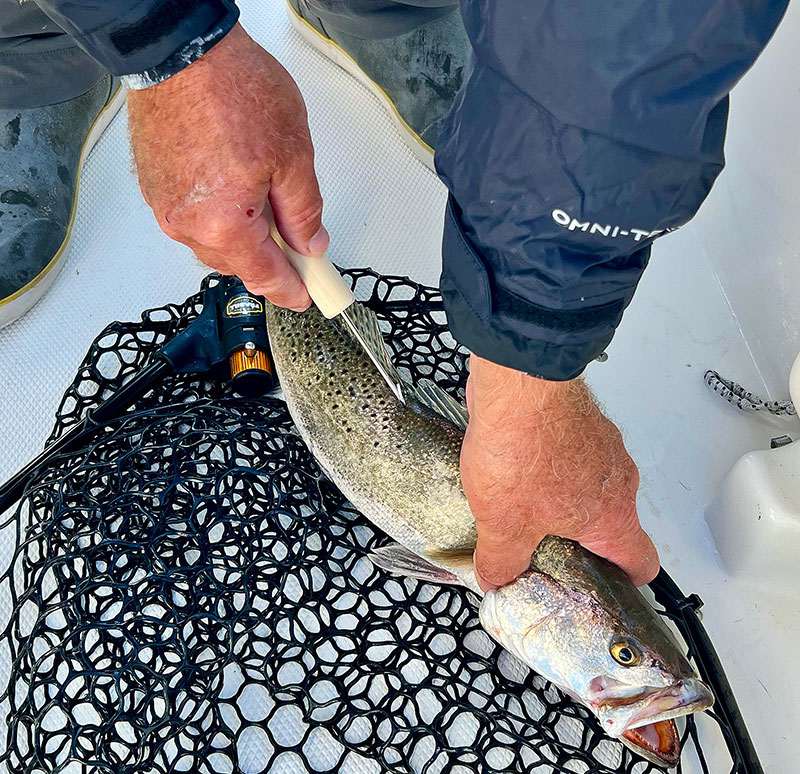
Have you ever caught a fish with a dart tag in its back? If you did, was it a yellow, blue, or red tag, and did you know what to do with the tag? If you did nothing with the tag you may have missed out on prizes or fascinating information about that fish. To avoid losing out on the fun, let’s review fish tagging.
There are different types of fish tagging programs in Louisiana. There is a fishery research and management tagging program, which uses tags to track and monitor fish populations, and there are at least two reward programs.
Rewards tagging programs
The most recognized rewards program is the annual Coastal Conservation Association’s (CCA) STAR Tournament, where 100 redfish are dart tagged and released across the coastal waters of Louisiana. The CCA redfish tags are red and read the tournament year and a certified number. The first 10 tagged redfish caught by tournament registrants win awesome prizes such as a pickup truck, a travel trailer, and boat packages. After the tournament ends in September those tagged redfish are worth two fillets on the half-shell.
Another tagging rewards program is run by Matrix Shad. The owner of Matrix Shad, Chas Champagne, personally dart tags thousands of bass, redfish, and speckled trout to encourage catch and release. The tags are blue and calling in the number on the tag will get you a prize from Matrix Shad. One nice thing about this program is that the reward period does not expire. You will also increase your chances of capturing a blue tagged fish by watching Champagne’s YouTube videos at Dockside TV, where you can spy on his fishing and tagging spots.
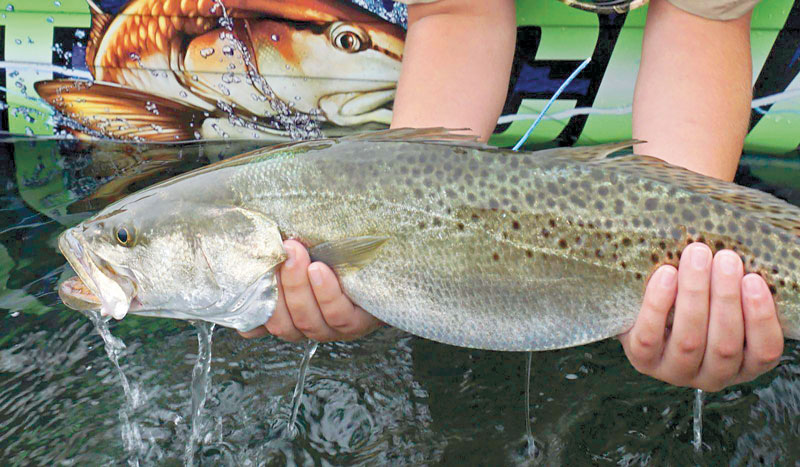
Scientific research
The tagging programs for research and monitoring of fish populations are typically run by a state agency or research institute. The scientific tagging can be conventional, which requires the recapture of tagged fish, or telemetry tagging, which does not require recapture. Typically the tagging is done by both anglers, also called citizen scientists, and trained agency staff.
In Louisiana, the scientific tagging program is run by TAG LA, which is an organization formed jointly by CCA and the Recreational Fisheries Research Institute (RFRI). TAG LA conducts conventional tagging with yellow dart tags. Randy Passina is the manager of the program and told me that TAG LA is working on improvements to the program, some of which will be launched in 2024.
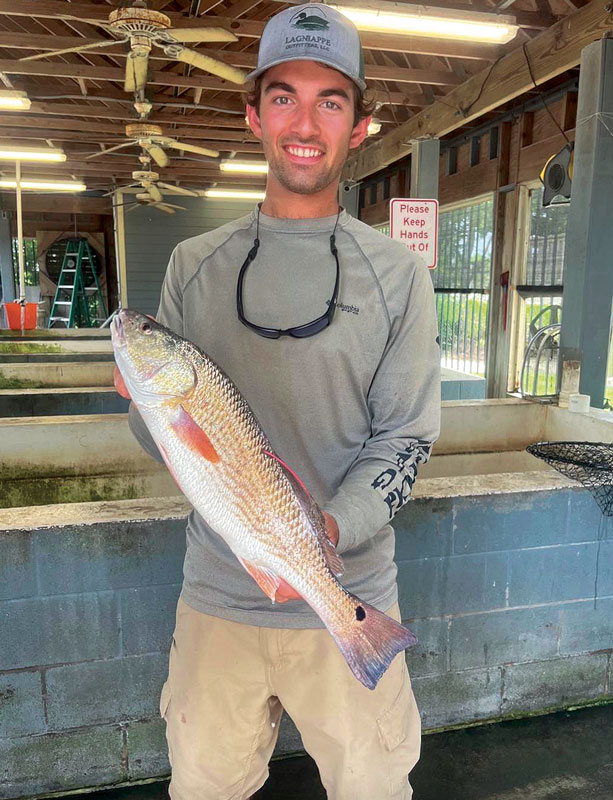
On the east side of Louisiana, anglers could also recapture a fish tagged in Mississippi through the Sport Fish Tag and Release Program of the Gulf Coast Research Laboratory (GCRL). GCRL is a department of the University of Southern Mississippi and also uses yellow tags.
The data generated by tagging programs is made available upon request to various state and federal agencies and to university students and professors. This data is not made available to the general public. Passina said there is a golden rule among tagging organizations that the information provided by anglers will not be made available publicly because it would give away the tagger’s fishing spots.
Reporting tagged fish
Yellow tags have information printed on the tubular bodies of the tags. This information can be read without removing the tag from the fish but you may need to carefully wipe dirt or biofilms off to read the tag. I suggest taking a picture of the tag from several angles for later retrieval.
The tag has two pieces of information, which is a website address or phone number and the tag number. The web address or phone number will allow the angler to report the tag number, where the fish was caught, what day it was caught, and the fish’s length. This set of information was also reported by the person who tagged the fish, so there is a baseline in the tagging database for that particular fish. Each time the fish is recaptured and the information reported, the researchers will have another data point about that fish’s movement and information that allows the calculation of its growth rate.
Angler incentives
Catching a tagged fish is a rare occurrence, and I have only recaptured one tagged fish in Louisiana. It was a speckled trout. Given how valuable the information is, we should always report the catch and release the fish in good health.
Fish tagging programs support the taggers by giving them a report every time a fish they tagged is reported, and the anglers who recapture a fish get a report showing their catch and the last time it was reported. Some agencies even provide incentives such as T-shirts and hats for reporting tagged fish. TAG LA provides a 15% discount on AFTCO merchandise for reported recaptures.
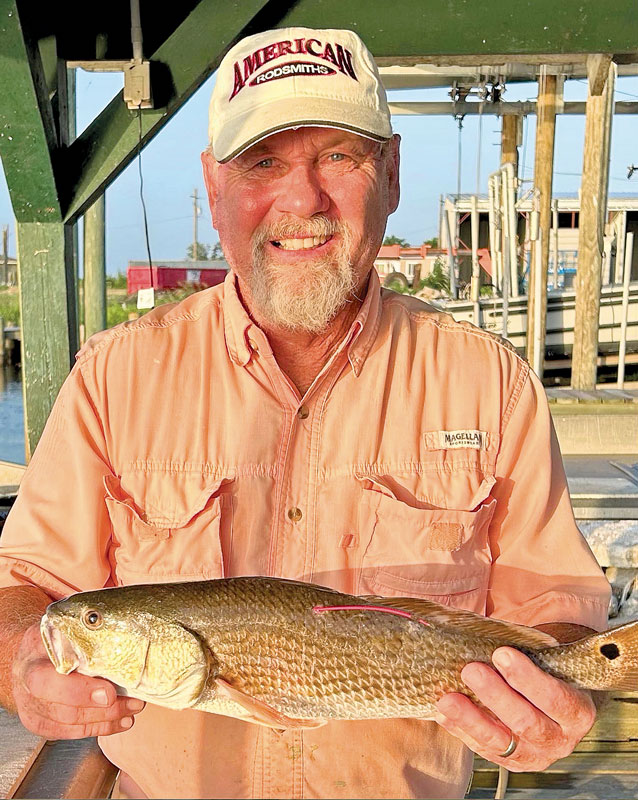
The information from tagging programs is fascinating because it gives anglers a glimpse into the life of a fish. For instance, there is a data set from a tagged redfish in South Carolina, which at the time had kept its tag for 590 days and been recaptured and released 8 times. During the study period this fish had grown an impressive 14 inches. The recaptures occurred in every season of the year and in the same creek, so clearly this fish had lived in the same water for the entire 590 days.
For the taggers, TAG LA is launching a phone app in 2024 called Angler’s Almanac, which will make the initial reporting easier by automatically recording the time, date, and location when a fish is tagged. All the information entered by the tagger is retrievable in the app, so the app can become a fishing diary.
Why would TAG LA give such a powerful tool to its taggers?
Passina said that angler participation is critical to the tagging program and this is one way to increase engagement with anglers. He said that a lot more can be done with the data being collected in tagging programs and TAG LA wants to be a leader in putting the data to use.
Inshore success
Most marine tagging programs include anywhere from 10-30 different species. Of these, the most relevant for Louisiana inshore fishing are redfish and speckled trout.
When comparing the recapture rate between redfish and speckled trout, all of the tagging program sources I spoke with stated that redfish recapture rates are much higher than trout recaptures. Passina confirmed Louisiana gets 2-3% recapture of trout, whereas their average across all species is 4%. Champagne from the Matrix Shad rewards program also confirmed that he gets many more recaptures of redfish and bass than recaptures of trout.
There were various reasons given for this recapture difference but of critical importance is the fact that redfish and trout, though they are both in the drum family, differ physiologically in several important ways. For instance, redfish are more hardy than trout and thus have less natural mortality. Redfish also have a firm flesh and large scales that hold dart tags well, whereas trout have soft flesh and small scales.
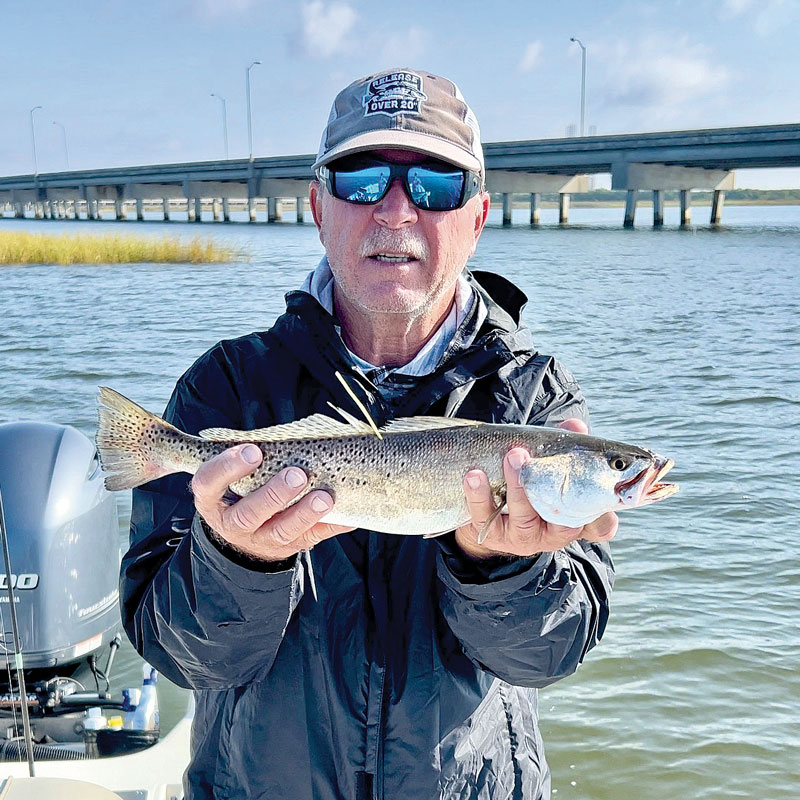
Tagging and mortality
The question of whether tagging increases mortality is one that has been investigated by several fishery programs. In general, the people I spoke with agreed that the highest mortality of the inshore species are among speckled trout. Several studies showed a range of mortality of hook caught, dart tagged, and released trout. For instance, a study in Virginia showed 3.5-4.0% mortality in the 3-7 days following tagging. On the high end of mortality, Randy Passina stated that TAG LA and the Louisiana Wildlife and Fisheries agency uses 10-15% mortality of hook caught and tagged fish.
However, the tagging program managers were quick to volunteer that the mortality of dart tagged fish could be lowered by observing certain guidelines. Tagging fish in the extremes of environmental conditions, when the fish are most stressed, can lead to higher mortality. Also, anglers should avoid excess handling of fish, wet their hands or use gloves, use rubber coated landing nets, and return the fish back to the water as quickly as possible.
I hope that this discussion of fish tagging has peaked your interest because it certainly has mine. We can all help increase the value that tagging programs bring to fisheries management. Randy Passina said that TAG LA has openings for more taggers and that in 2024 he will be using their expanded modeling tools to create features like fishing forecasts and fish heat maps, which will be posted on their website as part of the effort to increase the public’s use of tagging program data.
